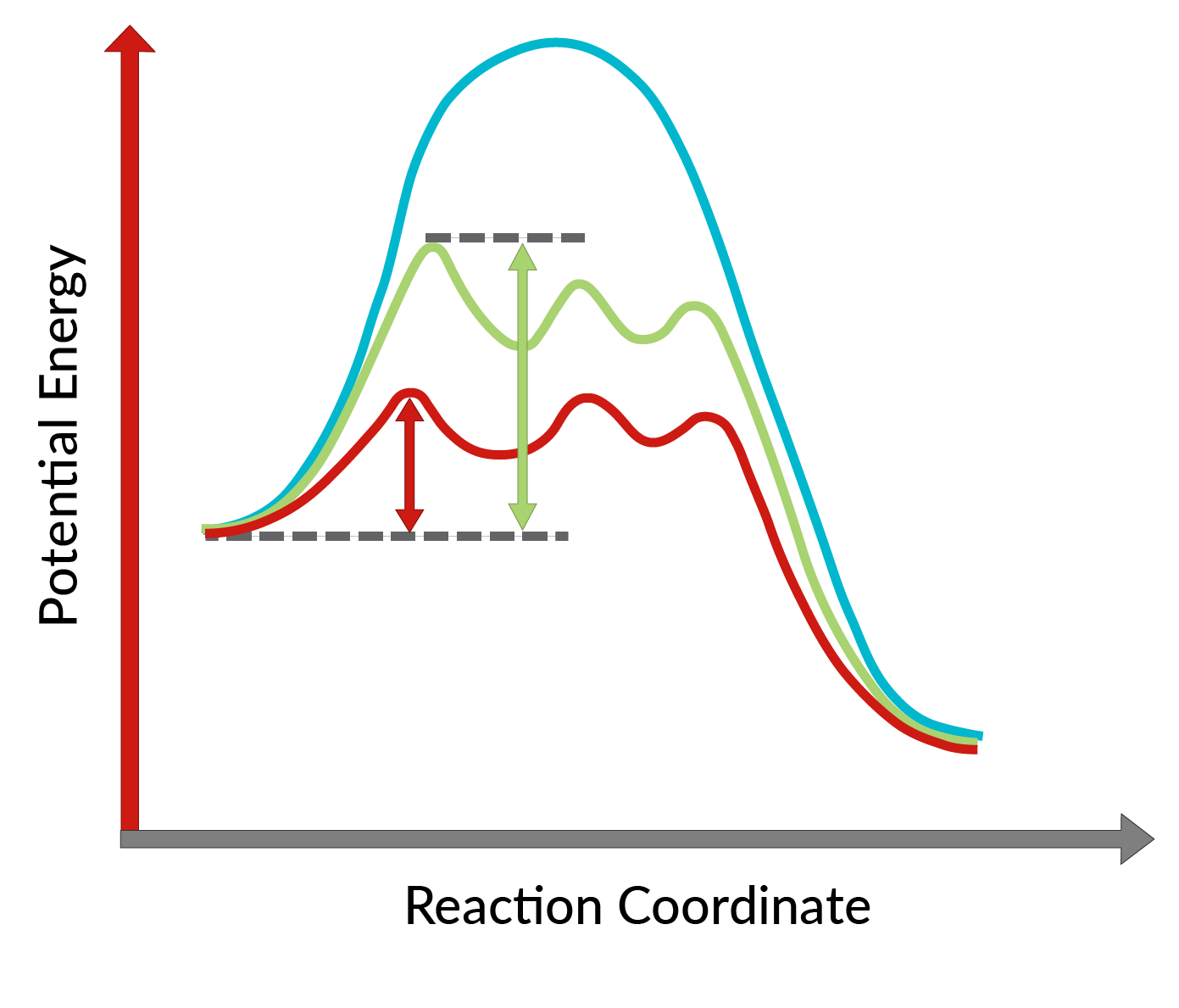11.10 : Sharpless Epoxidation
The conversion of allylic alcohols into epoxides using the chiral catalyst was discovered by K. Barry Sharpless and is known as Sharpless epoxidation. The use of a chiral catalyst enables the formation of one enantiomer of the product in excess. This chiral catalyst is mainly a chiral complex of titanium tetraisopropoxide and tartrate ester (specific stereoisomer). The stereoisomer used in the chiral catalyst dictates the formation of the enantiomer of the product. In other words, the use of L-(+)-diethyl tartrate leads to enantiomers having the epoxide ring below the plane, while with D-(−)-diethyl tartrate, to enantiomers with the epoxide ring above theplane. The high enantioselectivity of the reaction can be explained by considering the activation energies required for the reaction to proceed in the forward direction in the presence of the chiral catalyst. As shown in Figure 1, compared to the uncatalyzed reaction (blue curve), the activation energy of the reaction decreases dramatically with the addition of the chiral catalyst (red and green curves). Moreover, the activation energy for the formation of one enantiomer (red curve) is lowered more than that of another enantiomer (green curve), leading to the formation of one enantiomer in excess. Hence, Sharpless epoxidation reaction can be utilized for the synthesis of desired enantiomers of the product.

The stereochemistry of the product formed when any allylic alcohol is subjected to Sharpless epoxidation can be predicted by simply orienting the allylic alcohol molecule in a plane with the hydroxyl groups pointing towards the lower right corner, as shown in Figure 2. On this planar structure, D-(−)-diethyl tartrate delivers the oxygen from the top face of the alkene, making the epoxide formation feasible from above the plane, while L-(+)-diethyl tartrate delivers the oxygen from the bottom face of the alkene, thereby installing the epoxide ring from below the plane.
章から 11:

Now Playing
11.10 : Sharpless Epoxidation
エーテル、エポキシド、スルフィド
3.7K 閲覧数

11.1 : エーテルの構造と命名法
エーテル、エポキシド、スルフィド
10.9K 閲覧数

11.2 : エーテルの物性
エーテル、エポキシド、スルフィド
6.8K 閲覧数

11.3 : アルコールからのエーテル:アルコール脱水とウィリアムソンエーテル合成
エーテル、エポキシド、スルフィド
10.0K 閲覧数

11.4 : アルケンからのエーテル:アルコール添加とアルコキシ水銀キュレーション-水銀除去
エーテル、エポキシド、スルフィド
7.7K 閲覧数

11.5 : エーテルからハロゲン化アルキルへの:酸性切断
エーテル、エポキシド、スルフィド
5.5K 閲覧数

11.6 : エーテルの過酸化物およびヒドロペルオキシドへの自動酸化
エーテル、エポキシド、スルフィド
7.2K 閲覧数

11.7 : クラウンエーテル
エーテル、エポキシド、スルフィド
5.1K 閲覧数

11.8 : エポキシドの構造と命名法
エーテル、エポキシド、スルフィド
6.3K 閲覧数

11.9 : エポキシドの調製
エーテル、エポキシド、スルフィド
7.3K 閲覧数

11.11 : 酸触媒によるエポキシドの開環
エーテル、エポキシド、スルフィド
7.0K 閲覧数

11.12 : エポキシドの塩基触媒開環
エーテル、エポキシド、スルフィド
8.1K 閲覧数

11.13 : チオールと硫化物の構造と命名法
エーテル、エポキシド、スルフィド
4.5K 閲覧数

11.14 : チオールの調製と反応
エーテル、エポキシド、スルフィド
5.9K 閲覧数

11.15 : 硫化物の調製と反応
エーテル、エポキシド、スルフィド
4.7K 閲覧数
Copyright © 2023 MyJoVE Corporation. All rights reserved